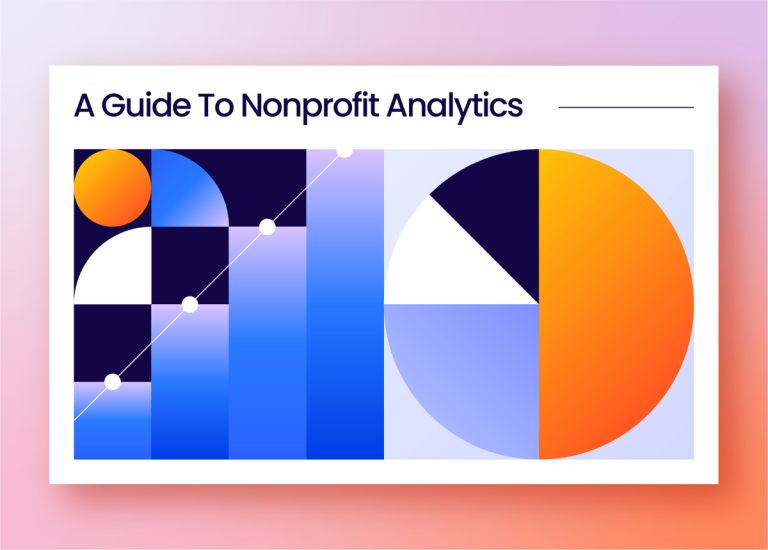It’s not just about collecting numbers; it’s about transforming those numbers into actionable insights that propel your mission forward. If you’re scratching your head over donor behavior, trying to smooth out operations, or looking for a boost in fundraising, taking a closer look at your nonprofit analytics could be the ace up your sleeve.
In today’s post, we’ll cover:
- A Comprehensive Guide to Data Analytics for Nonprofits
- Key Metrics and Data Points for Effective Nonprofit Management
- Leveraging Free Google Analytics for Your Nonprofit Website
- Enhancing Donor Engagement Through Data-Driven Strategies
- Utilizing Predictive Analytics to Shape Future Campaigns
- Building a Culture of Data Literacy Within Your Organization
- Nonprofit Analytics Are the Key to Your Organization’s Success
A Comprehensive Guide to Data Analytics for Nonprofits
Diving into nonprofit analytics means gathering, studying, and making sense of data to make smarter choices and optimize strategic planning with powerful raw data. It’s about using data to uncover trends, understand performance, and discover actionable insights.
By leveraging nonprofit data analytics, you can optimize your fundraising efforts, enhance donor stewardship, and ultimately achieve your mission more effectively.
The Importance of Data Analytics in the Nonprofit Sector
In today’s hustle and bustle, driven by numbers and data, it’s a no-brainer that nonprofits should embrace analytics with open arms. By embracing data, organizations can gain a competitive edge and make a more significant impact.
Key Metrics and Data Points for Effective Nonprofit Management
Donor Demographics and Giving History Insights
Getting to know your donors inside and out is the secret ingredient for forecasting future campaigns, using the correct communication channel, identifying which social media platforms to be on, and so much more.
Some key donor analytics to track include:
- Age
- Gender
- Location
- Giving frequency
- Average gift size
- Engagement metrics (i.e., which blog posts they’re clicking on in your emails, which campaigns they’re engaging with.)
- Event attendance
- Volunteer activity
- Communication preferences
- Peer-to-peer fundraising activity
- Donor lifetime value
With this data, you can segment your donors and tailor your communications and appeals to their preferences.
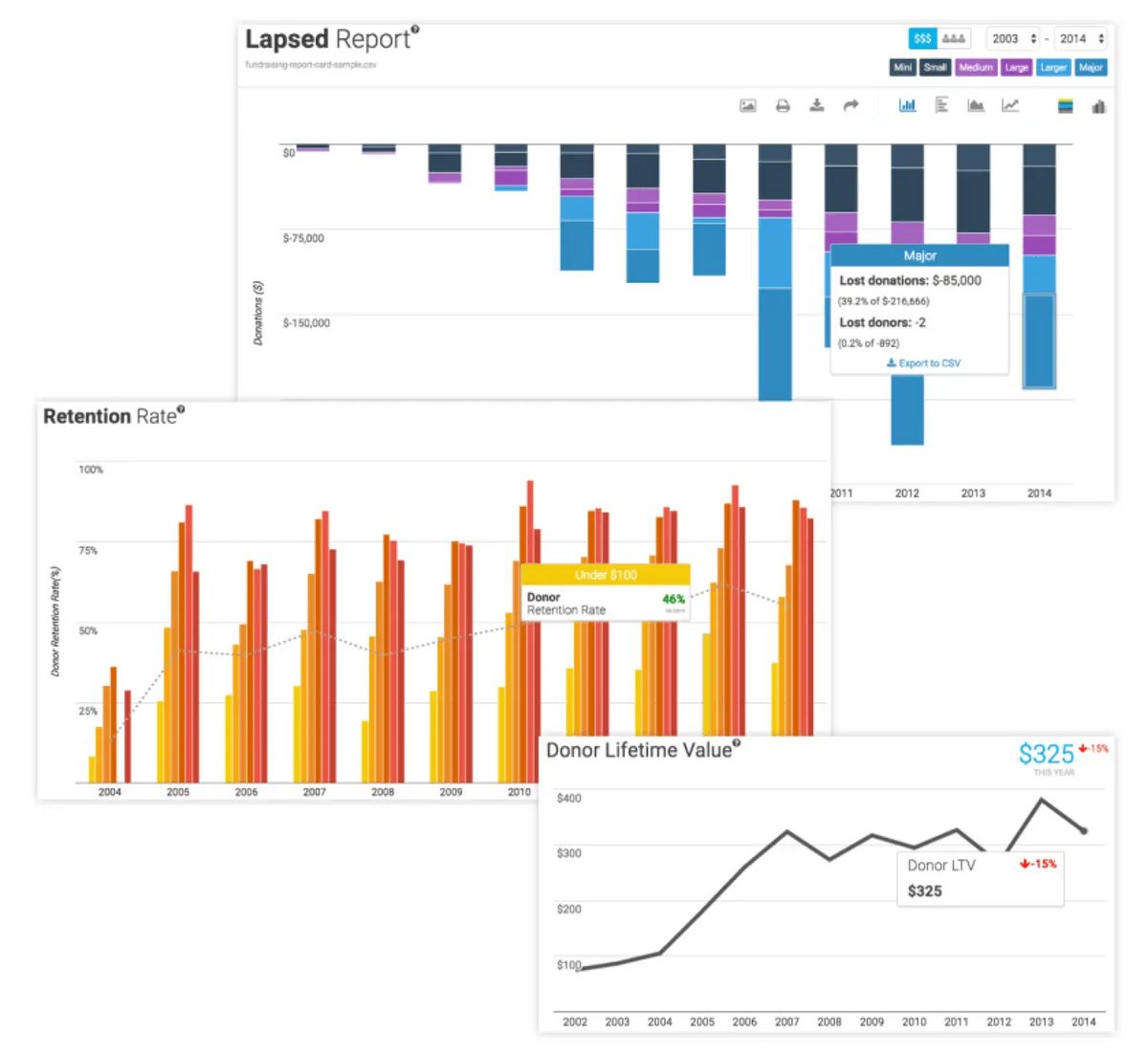
Tracking Online Engagement and Fundraising Participation
In today’s digital world, how well you connect online can make or break your fundraising efforts. By tracking nonprofit metrics like web analytics, email open rates, and social media engagement, you can gauge the effectiveness of your online campaigns and identify areas for improvement.
For example, if you have a high bounce rate on your emails, start an initiative for your administrative team or development team to call and collect data from donors like up-to-date email addresses and physical addresses so you’re not missing out on opportunities.
Another important metric to monitor is your fundraising participation rate. This measures the percentage of your supporters who donate. By tracking this over time, you can assess the health of your fundraising program and set goals for growth.
This is much easier with a data analytics tool for nonprofit organizations like Stratly, which helps collect data and turns it into descriptive analytics for nonprofit success.
Leveraging Free Google Analytics for Your Nonprofit Website
Setting Up Google Analytics for Nonprofits
Analyzing data doesn’t stop with your internal software, though.
One of the most powerful tools for nonprofit analytics is Google Analytics. Best of all, it’s completely free. By setting up free Google Analytics on your website, you can gain invaluable insights into your online performance.
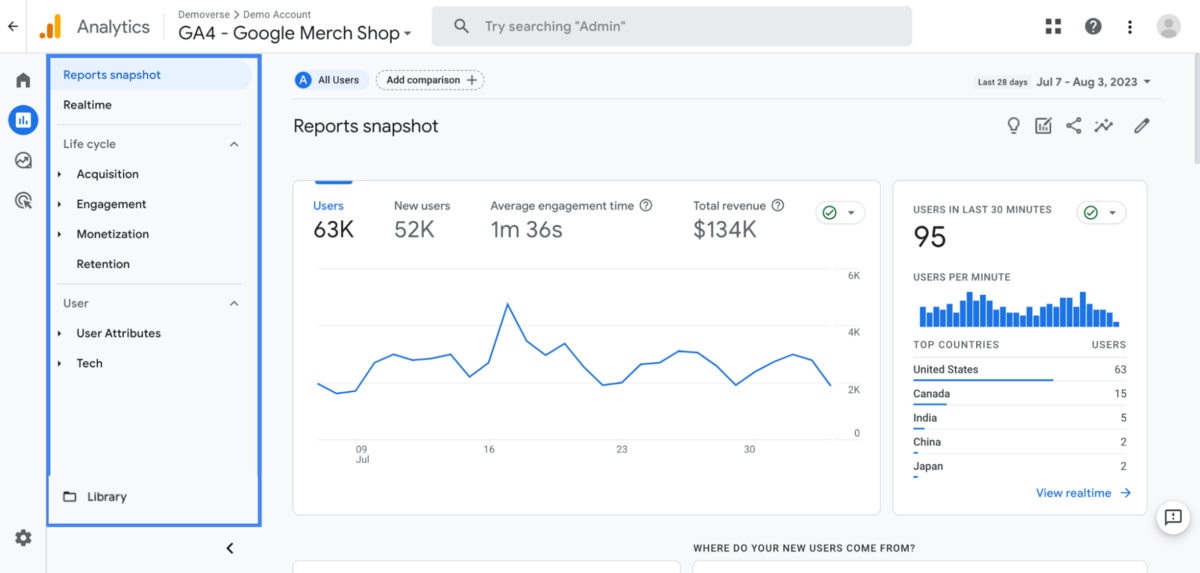
To get started, simply create a Google Analytics account and add the tracking code to your website. If you need help, check out Google’s step-by-step guide or consider working with a nonprofit analytics expert.
Understanding Website Traffic Sources and Visitor Behavior
Once you have Google Analytics set up, you can start exploring your website data.
One of the top performance indicators for your website and email marketing efforts are traffic sources. This tells you where your site visitors are coming from, whether through search engine organic traffic, social media, email, or referral traffic.
Using this data, you can focus your efforts on more Facebook posts if that’s driving people to your site or more blog posts if organic search drives traffic for every website session.
Two other important metrics are bounce rate, which measures the percentage of visitors who leave your site after viewing only one page, and session duration, which shares how long they’re staying on your pages.
If people bounce off your site like a rubber ball, it might mean they’re not clicking with what you have to say, or maybe finding their way around feels more like wandering through a maze.
Analytics helps nonprofits focus efforts and make decisions that optimize their resources—this is the ultimate goal!
Enhancing Donor Engagement Through Data-Driven Strategies
Donor analytics isn’t just about numbers, metrics, and resources, though. It’s about using data to build stronger, more meaningful relationships with your supporters.
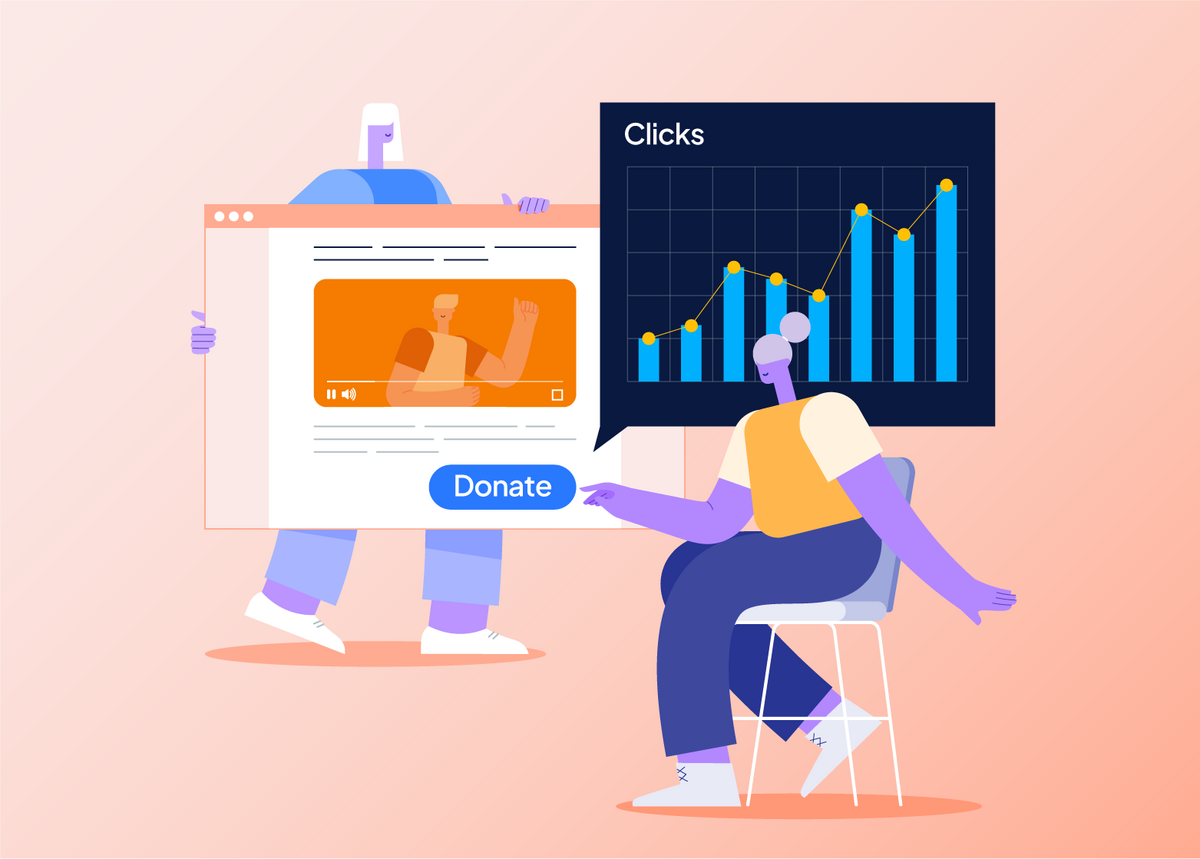
By analyzing donor behavior and preferences, you can create targeted engagement strategies that resonate with your audience. For example, if you notice that a particular group of donors responds well to personal stories, you can craft your appeals and updates to include more storytelling elements.
Data in the financial analytics space can also help you identify potential major donors or planned giving prospects. By looking at factors like giving history, engagement level, and demographic information, you can pinpoint supporters who may be ready to take their commitment to the next level at the specific time they’ll be ready to give.
Utilizing Predictive Analytics to Shape Future Campaigns
Without analytics nonprofit data is useless, especially when using predictive analytics. It’s almost like owning a magic crystal ball, the kind that gives you sneak peeks into what the future holds and helps you stay one step ahead.
Digging into past data and spotting trends lets you predict the outcome of future campaigns with almost spooky precision. With this in hand, you’ll be able to spot golden chances that others might miss and sidestep the kind of trouble spots that can really throw a wrench into things.
For example, let’s say you notice a spike in online donations every December. With predictive analytics, you can anticipate this trend and plan a targeted year-end giving campaign to maximize those donations.
Or maybe you discover that a certain type of content consistently drives more traffic to your website. You can use that insight to create more of that content and boost your visibility.
The key is to collect as much data as possible and use advanced analytical tools to make sense of it all. This is where big data comes in – the more information you have, the more accurate your predictions will be.
By embracing predictive analytics, you can shape your future campaigns with confidence and precision. It’s like having a secret weapon in your nonprofit marketing arsenal.
Building a Culture of Data Literacy Within Your Organization
Data analysis isn’t just for the experts – it’s for everyone in your organization. Bringing your entire team into the mix not only helps everyone get savvy with data but also paves the way for smarter, collective decision-making.
One way to do this is to hold regular “data days” where everyone reviews the latest metrics and brainstorm ideas for improvement. This helps create a sense of ownership and accountability around your data.
Another approach is to provide training and resources to help your team members develop their data skills. This could include online courses, workshops, or even just informal lunch-and-learns.
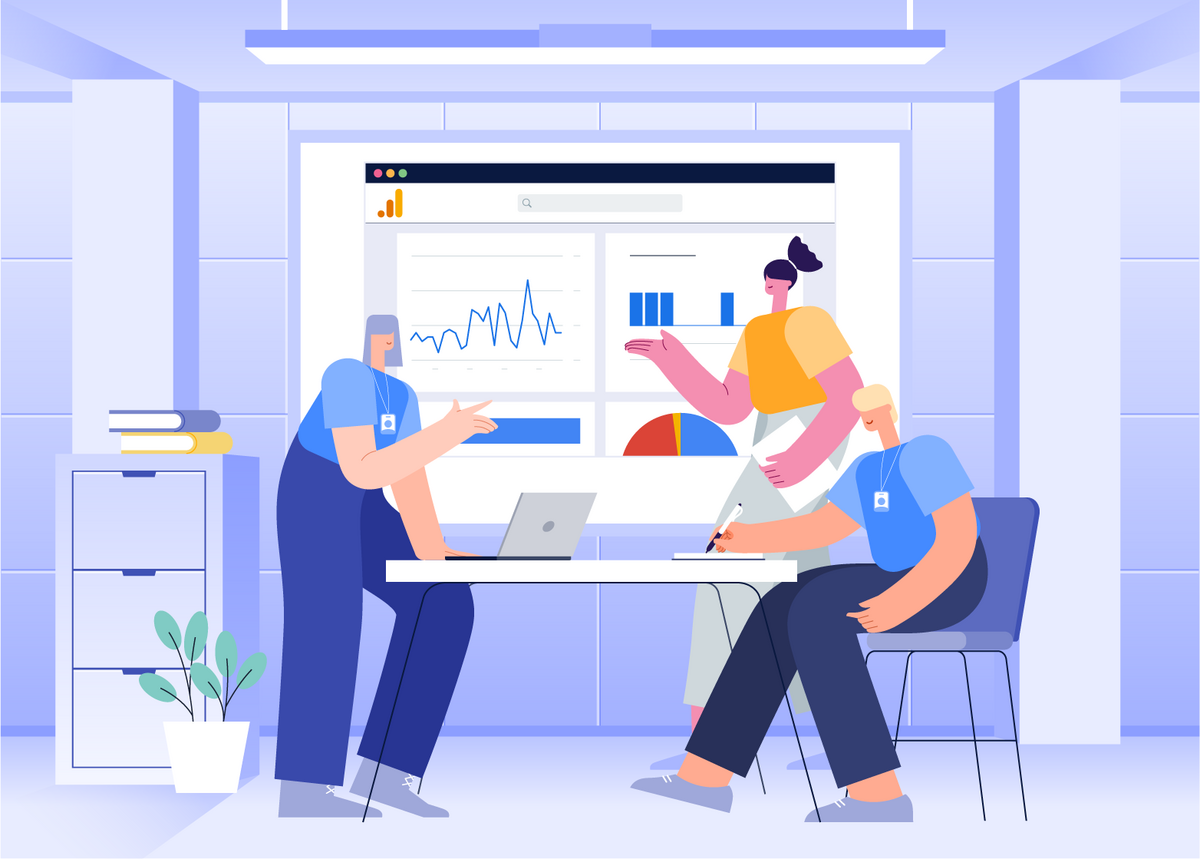
The key is to make data a part of your everyday conversations and decision-making processes. By doing so, you can unlock the full potential of your nonprofit’s data and achieve your mission more effectively.
Nonprofit Analytics Are the Key to Your Organization’s Success
As we’ve navigated the world of nonprofit analytics together, it’s become clear just how much these insights can revolutionize and supercharge fundraising efforts. From deciphering complex data patterns to predicting future giving trends, this powerful tool arms nonprofits with knowledge previously out of reach.
Stratly is helping nonprofits achieve their goals via robust nonprofit data analytics. By using the data we help harness with our analytics tool to anticipate future outcomes, focus on sources driving the best traffic to prospective donors, and optimize supporter engagement, nonprofits are thriving with our software on their side. Book your demo today!

